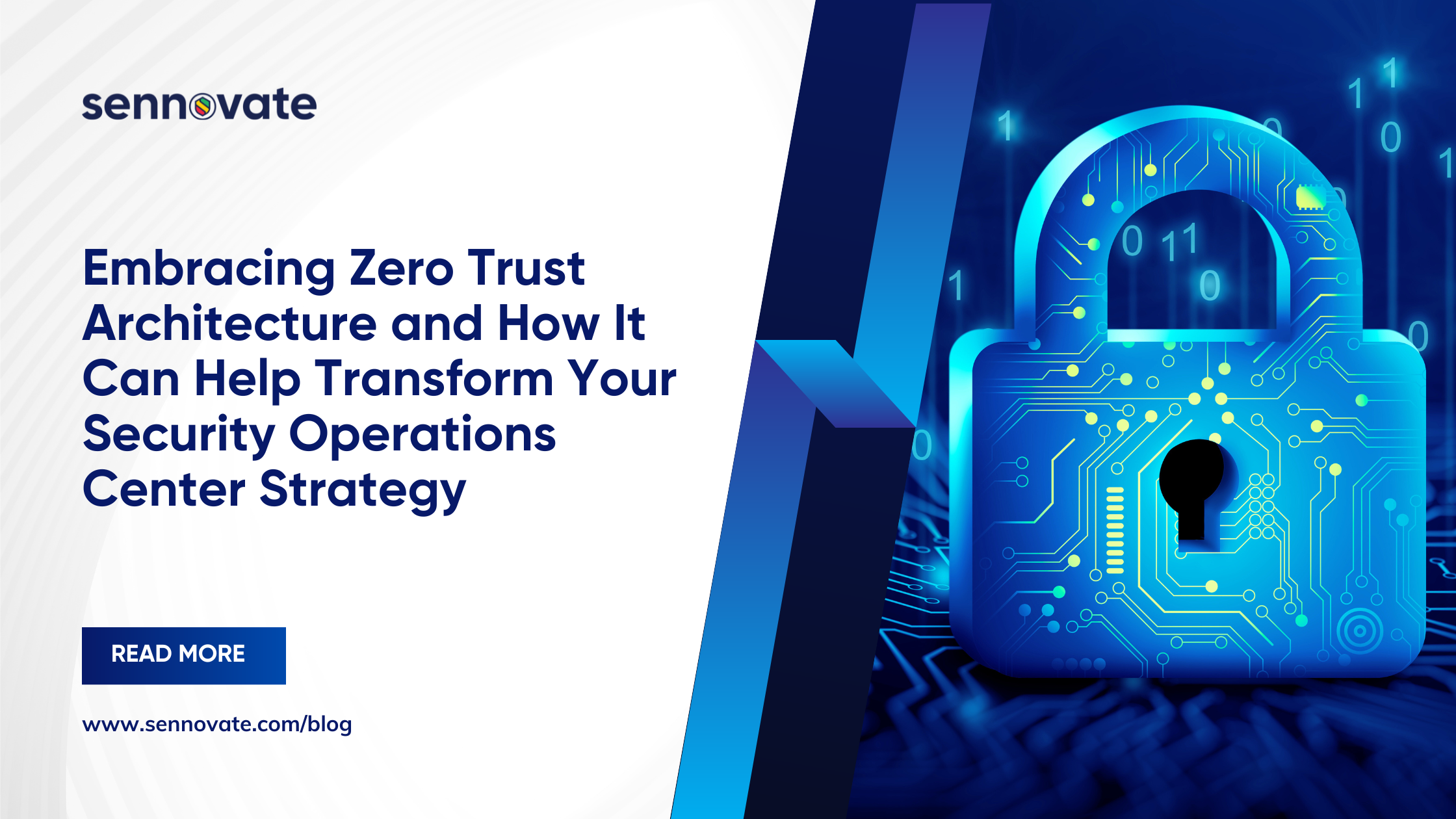
Embracing Zero Trust Architecture and How It Can Help Transform Your Security Operations Center Strategy


In an ever-evolving threat landscape, traditional security models are no longer sufficient to protect sensitive data and assets. The concept of zero trust architecture has emerged as a transformative approach that goes beyond surface-level security measures. By delving into the depths of this innovative strategy, organizations can bolster their security posture from within. This article aims to provide a comprehensive understanding of the same and shed light on its myriad benefits for organizations seeking to fortify their security framework.
What is Zero Trust?
In the realm of enterprise security, it is imperative for entities to recognize that the scope of concern extends beyond external threats alone. Internal threats pose a significant risk as well and should not be disregarded.
Zero trust architecture represents a paradigm shift in security strategies by advocating for continuous verification of every user and device attempting to access all organizational resources. Unlike traditional models that rely on perimeter-based defenses, it takes a proactive stance by requiring authentication and authorization for all access attempts, regardless of the user’s location or device. This approach drastically reduces the attack surface and minimizes the risk of lateral movement within the network.
What is a Security Operation Center (SOC)?
At the heart of an organization’s security apparatus lies the SOC, serving as a nerve center where security professionals work tirelessly to monitor, detect, and respond to security incidents. It acts as a centralized hub, equipped with cutting-edge technologies and skilled analysts, to ensure the protection of vital infrastructure, networks, and data. By maintaining constant vigilance, the SOC identifies potential threats and mitigates risks to prevent unauthorized access, data breaches, and other malicious activities.
How does Zero Trust help Security Operations Center Strategy (SOC)?
Zero trust architecture forms the bedrock of the SOC’s security model, emphasizing identity verification and stringent access control. This approach recognizes that trust cannot be solely attributed to internal networks or individual entities. Instead, it requires continuous authentication and authorization for every user and device seeking access to resources, regardless of their location or status within the organization.
Identity Verification and Access Control
Within zero trust architecture, identity verification takes precedence in the pursuit of secure access. Robust multifactor authentication, coupled with continuous monitoring and device health checks, ensures that only authorized personnel are granted access to the appropriate resources. By adopting this identity-centric approach, the SOC minimizes the risk of unauthorized access attempts and enforces strict control over user privileges.
Micro-Segmentation and Least Privilege
Zero trust architecture empowers organizations to implement micro-segmentation and adhere to the principle of least privilege. By segmenting the network into isolated compartments and assigning finely grained access permissions, the SOC curtails lateral movement and mitigates the potential impact of successful attacks. This strategic approach effectively reduces the attack surface, erecting formidable barriers that prevent unauthorized users from navigating through the network.
Benefitting from Zero Trust Architecture
Adopting zero trust architecture within the SOC yields numerous advantages for organizations. It establishes a comprehensive security framework that safeguards critical assets, prevents unauthorized access, and reduces the likelihood of successful breaches. By embracing an identity-centric approach, organizations can proactively respond to evolving security threats, detect anomalies, and swiftly respond to potential incidents. Furthermore, the granular access controls enforced through micro-segmentation ensure that users are granted only the necessary permissions, minimizing the risk of privilege abuse or lateral movement within the network.
Conclusion
Within the realm of enterprise security, the SOC serves as the vanguard against potential threats and breaches. By integrating zero trust architecture into its security model, the SOC can bolster defenses, strengthen identity verification, implement micro-segmentation, and adhere to the principle of least privilege. This holistic approach ensures that only authorized individuals access critical resources, mitigates the risk of lateral movement, and fortifies the organization’s security posture. By embracing it architecture, organizations can confidently navigate the evolving threat landscape and safeguard their infrastructure, networks, and valuable data.
Having any doubts or want to have a call with us to know more about our Next Gen SOC?
Contact us right now by clicking here, Sennovate’s Experts will explain everything on call in detail.
You can also write a mail to us at [email protected] or call us on +1 (925) 918-6618.
About Sennovate
Sennovate delivers Managed Security Operations Center (SOC) solutions and custom Identity and Access Management (IAM) solutions to businesses around the world. With global partners and a library of 2000+ integrations, 10M+ identities managed, we implement world-class cybersecurity solutions that save your company time and money. We offer a seamless experience with integration across all cloud applications, and a single price for product, implementation, and support. Have questions? The consultation is always free. Email [email protected] or call us at: +1 (925) 918-6618.
